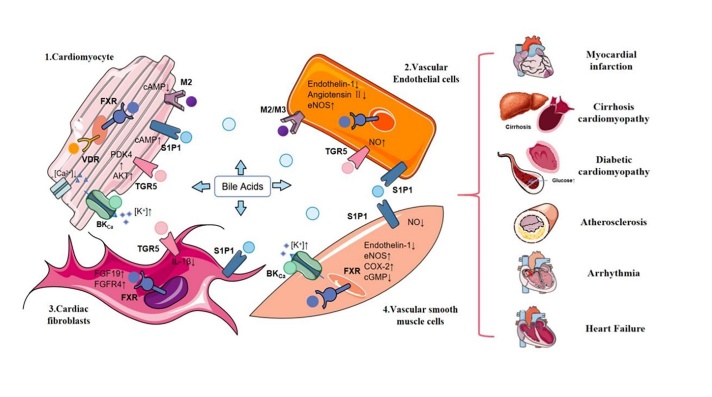Figure 2.
BAs affect cardiovascular disease by binding to various receptors that affect metabolism and regulation of lipid profiles. These receptors include nuclear receptors (FXR, PXR, VDR, LXR), G protein-coupled receptor (TGR5, muscarinic receptor, S1PR) and Ca2+-activated potassium (K+) (BK) channels. These receptors are highly expressed in cells associated with the cardiovascular system, such as cardiomyocytes, endothelial cells, cardiac fibroblasts and vascular smooth muscle cells. By binding to receptors on cells, BAs further influence intracellular regulators related to CVD risk. They are ultimately involved in the occurrence and development of cardiovascular system diseases such as cardiomyopathy, atherosclerosis, arrhythmia, and heart failure by affecting the relevant regulatory factors of cardiovascular disease risk.

